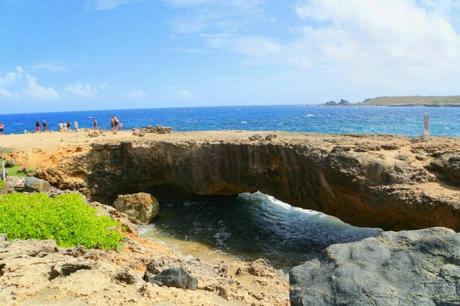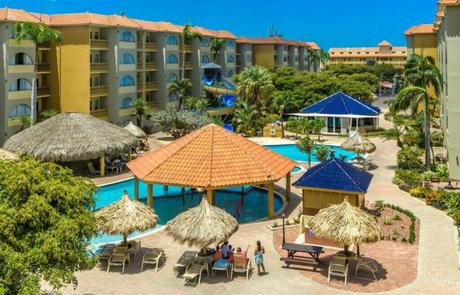Aruba and St. Kitts and Nevis, two stunning Caribbean destinations, offer distinct experiences for travelers seeking an unforgettable island getaway.
Aruba charms with its contrasting landscapes, from pristine white sand beaches to rugged coastlines shaped by centuries of wind and waves. Meanwhile, St. Kitts and Nevis boast a more traditional tropical paradise, with cloud-shrouded mountains, lush rainforests, and hidden waterfalls.
The islands also showcase their unique cultural heritages, with vibrant festivals, delicious cuisine, and warm hospitality. Beach lovers will find their bliss on both islands, while outdoor enthusiasts can choose between Aruba’s diverse adventures and St. Kitts and Nevis’s nature-immersed activities.
LocationCaribbean SeaCaribbean Sea
GeographyIslandIsland
LanguageDutch, Papiamento, EnglishEnglish
GovernmentParliamentary democracyParliamentary democracy
CurrencyAruban florin (AWG)Eastern Caribbean dollar (XCD)
TourismMajor tourist destinationGrowing tourist industry
EconomyTourism, oil refining, financeTourism, agriculture, manufacturing
CultureDutch, Caribbean influencesAfrican, British influences
AttractionsPalm Beach, Natural Pool, Arikok National ParkBrimstone Hill Fortress, Mount Liamuiga, Nevis Peak
ClimateTropicalTropical
Whether you prefer luxurious resorts or cozy guesthouses, these Caribbean gems promise an enchanting escape that will leave you longing for more.
Geographical Features: Contrasting Landscapes and Natural Wonders

Aruba, affectionately known as “One Happy Island,” sports a surprisingly diverse terrain. The southern and western coasts offer pristine white sand beaches that morph seamlessly into turquoise waters, while the northern and eastern coasts feature a more rugged, wind-swept landscape, with towering cacti and dramatic rock formations shaped by centuries of relentless wind and waves. Despite its compact size, the island offers an enticing blend of tranquility and adventure, with Arikok National Park occupying nearly 20% of its land.
St. Kitts and Nevis, on the other hand, boast a more traditionally tropical landscape. From the cloud-shrouded peak of Mount Liamuiga in St. Kitts to the lush rainforests teeming with exotic wildlife and hidden waterfalls, the islands are a nature lover’s dream come true. The undulating landscapes, framed by golden beaches and azure waters, offer an ever-changing panorama that begs to be explored.
Despite the marked differences, both locations share a deep-seated respect for their natural wonders. In Aruba, efforts are made to protect the native flora and fauna, with the island hosting several protected marine parks and sanctuaries. Similarly, St. Kitts and Nevis have prioritized eco-tourism, preserving their natural habitats and championing sustainable practices.
Yet, their geographical contrasts offer travelers a distinct choice: Aruba’s unique desert-meets-sea landscape or St. Kitts and Nevis’s lush tropical allure. The decision, of course, depends on your personal preference, whether you’re a beach lounger or an off-the-beaten-path explorer.
Cultural Riches: Exploring the Heritage and Traditions

Aruba’s cultural tapestry is woven with threads from Amerindian, Spanish, Dutch, and African heritages. This cultural melange is apparent everywhere, from the island’s architectural aesthetics to its vibrant festivals. One must not miss the weekly Bon Bini Festival, a festive celebration of Aruban culture featuring music, dance, and local food.
The Aruban tongue, Papiamento, itself is a Creole language blending influences from several European and African languages.
St. Kitts and Nevis offer a similar rich cultural immersion, rooted in their Carib, British, and African influences. From the UNESCO World Heritage Site, Brimstone Hill Fortress, which narrates tales of colonial history to the thrilling annual Carnival celebrations, the islands are a cultural treasure trove.
The distinct local dialect, peppered with English, African, and French influences, adds to the island’s cultural charm.
Both islands celebrate their unique cultural identities through vibrant festivals, delectable cuisine, and traditional arts and crafts. However, while Aruba leans more towards a cosmopolitan vibe with a dash of historic charm, St. Kitts and Nevis retain a more rustic, untouched feel.
Yet, whichever island you choose, you are guaranteed to encounter a warm, welcoming populace, eager to share their rich heritage and infectious joie de vivre.
Beach Paradise: Unraveling the Coastal Charms

Aruba’s coastal offerings are a beach bum’s dream. Eagle Beach, lauded as one of the world’s best beaches, entices with its wide stretch of white sand and clear, calm waters. The scenic Palm Beach, lined with high-rise resorts, offers water sports, piers, and beach bars, perfect for those seeking livelier pursuits. And for the more adventurous, there are secluded coves like Andicuri Beach waiting to be discovered.
St. Kitts and Nevis, on the flip side, lure beach lovers with a variety of sands—golden, black, and even silver—each with its own charm. Frigate Bay is a popular choice for tourists seeking a balance of relaxation and entertainment, while South Friars Bay offers a more serene environment. Nevis’s Pinney’s Beach, with its four-mile-long sandy stretch and idyllic beach bars, is a not-to-be-missed spot.
Both island nations flaunt an impressive array of beaches, each with unique characteristics. While Aruba’s beaches are generally more developed with numerous amenities, those in St. Kitts and Nevis lean towards the tranquil and untouched. Nevertheless, sun, sand, and surf are guaranteed in ample measure at both destinations.
Outdoor Adventures: Thrilling Activities and Excursions

Aruba’s geographical diversity makes it an adventurer’s playground. From exploring the rugged terrain of Arikok National Park, windsurfing over the azure waves at Hadicurari Beach, to snorkeling amidst the vibrant marine life, the island offers a range of activities to satiate your adventure cravings.
St. Kitts and Nevis, in contrast, provide ample opportunities to immerse in nature. Hiking up the cloud-capped Mount Liamuiga, zip-lining through the rainforest, or diving into the vibrant underwater world of Monkey Shoals, the islands offer an exciting mix of land and water-based adventures.
Both destinations promise an exhilarating array of outdoor pursuits, tailored to every kind of adventurer.
Whether it’s the windswept wildness of Aruba or the tropical allure of St. Kitts and Nevis, each destination brings its own brand of adrenaline rush.
Accommodation and Hospitality: Comparing Resorts and Local Stay Options

Aruba’s accommodation scene is dominated by an array of luxury resorts and hotels, most of them lining the popular Palm and Eagle beaches. These resorts offer top-notch facilities, from spas and fine dining to a variety of water sports. For a more local flavor, there are charming guest houses and apartments scattered around the island.
St. Kitts and Nevis, though having their share of luxury resorts, also present a range of boutique hotels and guest houses that offer a more intimate experience. These accommodations, often family-run, blend local charm with modern comforts, providing an authentic taste of island life.
In terms of hospitality, both islands stand on equal footing. Renowned for their warm and friendly locals, Aruba and St. Kitts and Nevis offer a level of hospitality that is hard to match. Yet, the choice between the two comes down to your preferred style of accommodation—modern, all-inclusive resorts or charming, local guesthouses.
Choosing Your Ideal Island Getaway: Factors to Consider

When comparing Aruba and St. Kitts and Nevis, the first factor to consider is their geographical differences. If you prefer a desert-meets-sea landscape with more developed tourist facilities, Aruba would be a suitable choice. If lush rainforests, volcanoes, and a rustic charm sound more appealing, consider St. Kitts and Nevis.
In terms of culture, both islands are rich in history and tradition, but they express it in their own unique ways. Aruba’s vibrant festivals, cosmopolitan vibe, and unique creole language make it a fascinating cultural experience. On the other hand, St. Kitts and Nevis offer a deeper dive into Caribbean history with their colonial architecture and traditional lifestyle.
Beach lovers can find their slice of paradise on either island, but your preference of a bustling beach scene versus a tranquil coastal retreat might tip the scale. For outdoor adventures, consider the kind of activities you enjoy – if rugged exploration and wind sports appeal to you, Aruba is your island; if you love hiking, lush greenery, and eco-adventures, St. Kitts and Nevis beckon.
Finally, your choice of accommodation—luxury resorts versus boutique hotels—can also influence your decision. But rest assured, both islands boast a warmth and friendliness that will make you feel right at home, no matter where you choose to stay.
FAQ

Is St. Kitts or Aruba better?
Both St. Kitts and Aruba offer unique experiences, and the answer depends on individual preferences. Aruba is known for its stunning beaches, diverse landscapes, and vibrant culture, making it a popular choice for beach lovers and those seeking a mix of tranquility and adventure. St. Kitts, on the other hand, boasts a lush tropical landscape, rich cultural heritage, and a more rustic, untouched feel. Travelers looking for a nature-immersed experience and a deeper dive into Caribbean history may find St. Kitts to be their preferred destination.
Is St. Kitts bigger than Aruba?
No, St. Kitts is smaller than Aruba. St. Kitts covers an area of approximately 168 square kilometers (65 square miles), while Aruba is slightly larger, spanning about 180 square kilometers (70 square miles). Despite their size differences, both islands offer a variety of attractions and activities for visitors to enjoy, showcasing their distinct charms in their own unique ways.
Is St. Kitts near Aruba?
St. Kitts and Aruba are located in the Caribbean region, but they are not particularly close to each other. The distance between the two islands is approximately 1,500 kilometers (930 miles). They are situated in different parts of the Caribbean Sea, with Aruba being located in the southern Caribbean near the coast of Venezuela, while St. Kitts is situated in the eastern Caribbean, near the northern coast of South America.

